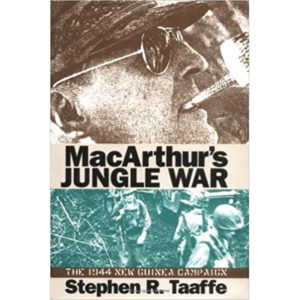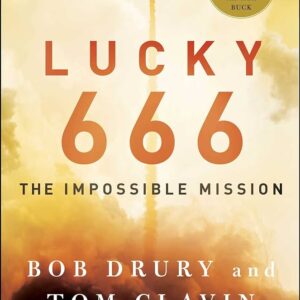$16.00
Description
Lying due north of Australia, New Guinea is among the world’s largest islands. In 1942, when World War II exploded onto its shores, it was an inhospitable, poorly mapped, disease-ridden land of dense jungle, towering mountain peaks, deep valleys, and fetid swamps. Coveted by the Japanese for its strategic position, New Guinea became the site of one of the South Pacific’s most savage campaigns.
The Japanese were trying to get a foothold on the south coast of the island, opposite Australia. The American Thirty-second (Red Arrow) Infantry Division had the job of driving them back over the Owen Stanley Mountains. Ghost Mountain earned its name from the eerie phosphorescent glow given off at night by moss-covered trees in the forests on its slopes. Despite their lack of jungle training, the 32nd Division’s ”Ghost Mountain Boys” were assigned the most grueling mission of the entire Pacific campaign: to march 130 miles over the rugged Owen Stanley Mountains and to protect the right flank of the Australian army as they fought to push the Japanese back to the village of Buna on New Guinea’s north coast.
Comprised of National Guardsmen from Michigan and Wisconsin, reserve officers, and draftees from across the country, the 32nd Division lacked more than training—they were without even the basics necessary for survival. The division was shipped to Australia to navigate New Guinea’s rain forests without any jungle training, or even proper supplies. The men were not issued the specialized clothing that later became standard issue for soldiers fighting in the South Pacific; they fought in hastily dyed combat fatigues that bled in the intense humidity and left them with festering sores. They waded through brush and vines without the aid of machetes. They did not have insect repellent. Without waterproof containers, their matches were useless and the quinine and vitamin pills they carried, as well as salt and chlorination tablets, crumbled in their pockets. Exhausted and pushed to the brink of human endurance, the Ghost Mountain Boys fell victim to malnutrition and disease. Forty-two days after they set out, they arrived two miles south of Buna, nearly shattered by the experience.
They succeeded, at the cost of more than 10,000 casualties, four-fifths of them from tropical diseases contracted in the face of heavy rain, biting insects, astonishing depths of mud, rugged terrain, perpetually rancid weather, shortage of supplies (including medicines and drinking water), and, not incidentally, the Japanese.
Arrival in Buna provided no respite. The 32nd Division was ordered to launch an immediate assault on the Japanese position. After two months of furious—sometimes hand-to-hand—combat, the decimated division finally achieved victory. The ferocity of the struggle for Buna was summed up in Time magazine on December 28, 1942, three weeks before the Japanese army was defeated: “Nowhere in the world today are American soldiers engaged in fighting so desperate, so merciless, so bitter, or so bloody.”
This harrowing portrait of a largely overlooked campaign is part war diary, part extreme adventure tale, and (through letters, journals, and interviews) part biography of a group of men who fought to survive in an environment every bit as fierce as the enemy they faced.
This is an outstanding book about a remarkable story. It is well researched, thoroughly documented and hard to put down. The author actually walked the Ghost Mountain Track from the Port Moresby side of New Guinea over the Owen Stanley Mountains to Buna.





